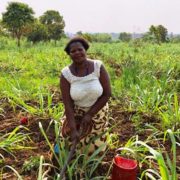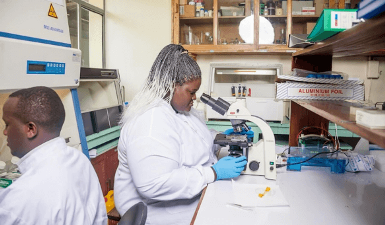By Violet Chihota
Before COVID-19 came along, the two most lethal infectious diseases were HIV and tuberculosis (TB). Even though HIV still lingers, with 1.5 million people contracting the infection every year, epidemiologists point to the availability of many HIV prevention options as a primary reason for the decreasing caseload.
According to the World Health Organization (WHO), over the past two decades, new HIV infections decreased by 49%, HIV-related deaths decreased by 61% and an estimated 18.6 million lives were saved because of new treatments that minimise the infection and prevent its spread.
We have so many options for HIV prevention at our disposal, including the dapivirine vaginal ring, oral Pre-Exposure Prophylaxis (PrEP), harm reduction for people who use drugs, condoms for both men and women, voluntary medical male circumcision and the recently approved long-acting cabotegravir, with other options in development.
We have a suite of prevention tools because everyone is different, and people need to be able to choose their methods according to the way they live their lives. We observe a similar abundance of choice within family planning with oral pills, a variety of injectables, intra-uterine devices and condoms—we share this prevention method with HIV programs.
We do not have this many options for TB prevention, but the world needs to adapt to embrace choice if we are to meet the globally agreed-upon goal of reducing TB deaths by 90% by 2030—referred to as the “End TB targets.” The urgency of the need is clear: an estimated 1.6 million people lost their lives to the disease in 2021, the second consecutive year the death toll went up after 14 years of progress. In Africa, an estimated 2.5 million people contracted the disease in 2021, one million of which were never diagnosed and treated.
Yet there are glimmers of good news. Despite the COVID-19 pandemic, estimates of TB incidence have slowly declined over the past few years in Angola, Ethiopia, Gabon, the Republic of Congo, Sierra Leone, South Africa, Tanzania and Zambia—all countries with high burdens of TB. Of these countries, Zambia has also had success in finding and diagnosing an increasing number of these infections; the pandemic impacted the surveillance efforts of the other governments.
As for HIV, there is no effective vaccine to prevent TB in adults: the BCG vaccine only prevents severe TB in children. However, there are ways to prevent TB when someone is potentially exposed to an infected person. In the workplace or when a family member at home becomes sick, for example, prevention starts with masking, which was traditionally used in clinical care settings. The other ways work through prophylactic regimens. For TB, we initially only had isoniazid that could be taken for six, nine, 12 or 36 months depending on country guidelines, but now we have shorter regimens that allow for patient choice.
These options include regimens lasting one (1HP) and three months (3HP), with different combinations of the antibiotic drugs rifapentine and isoniazid, all with vitamin B6 supplements to help counter some of the side effects of treatment. There is also a three-month regimen of rifampicin and isoniazid (often given to children and adolescents) and a four-month regimen of rifampicin alone. Longer courses of isoniazid taken for 6–36 months also remain options, though most people are eligible to take a shorter rifapentine- or rifampicin-based regimen and should be given the choice to do so.
We need to do a better job of making sure that people at risk of TB have access to the full range of prevention options. A recent peer-reviewed study underlines this point, estimating that tracing the personal contacts of people diagnosed with TB and providing them with prevention treatment would save the lives of 700,000 children under the age of 15 and 150,000 adults by 2035. Even the financial benefits of the prevention program, in terms of increased economic productivity, would outweigh the costs. Nobody questions the need to have options for HIV prevention or family planning, but questions arise when trying to roll out a one-month TB prevention regimen when there’s already a three-month regimen available. We need them all. We also need to collect more data to differentiate which prevention regimens are best for each patient type to ensure success.
The WHO guidelines for preventive TB treatment create the possibility of choice among TB preventive treatments by not ranking the regimens by preference or effectiveness. But health care facilities and outreach programs need to embrace that range of options and make sure that a choice exists in practice. Supply chains may limit choice initially, but if there is no demand for more options from providers, there is no impetus to expand the supply chains.
The progress made in HIV prevention is nothing short of a global success story. It took a combination of scientific ingenuity and innovation, combined with an intensive dedication of resources that made a range of preventive options available around the world.
It is time that TB caught up to HIV. Medicine is simply too advanced for us to tolerate how one disease can be beaten back yet another continues to flourish.


Violet Chihota is an Adjunct Associate Professor and Chief Specialist Scientist at the Aurum Institute. She has been a researcher in global health for over 10 years, designing and managing the conduct of clinical research studies in South Africa, Zimbabwe, Botswana, Cameroon, Georgia, India and Malaysia.





















